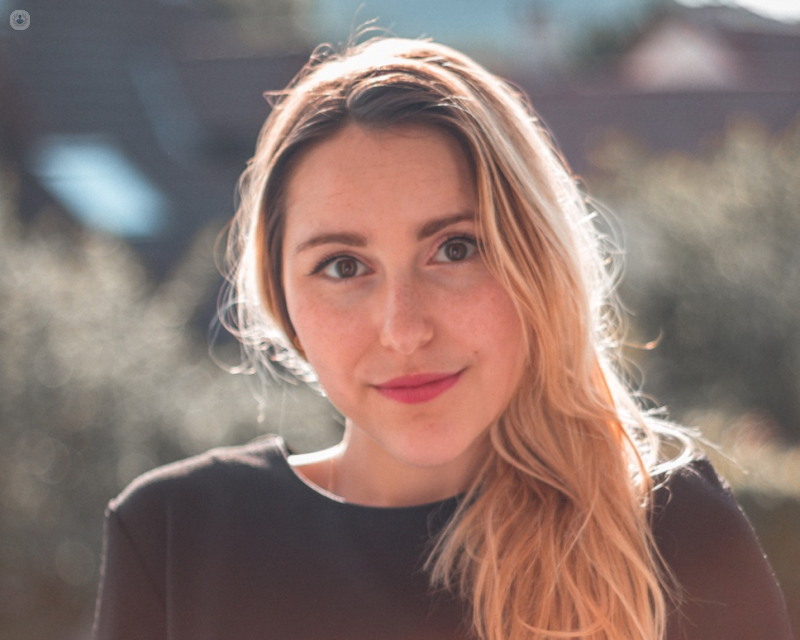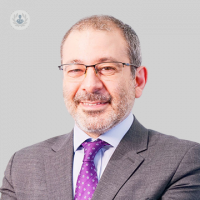How is achalasia diagnosed and treated?
Written in association with:Achalasia is a condition that affects the nerves and muscles of the oesophagus. This condition causes the bottom of the oesophagus to lose its ability to open by itself. As a result, the oesophagus has difficulty pushing food and drink into the stomach. We spoke with leading consultant gastroenterologist Dr Rami Sweis, to find out who is likely to be affected by this condition, how it’s diagnosed and how it can be treated.

Who is likely to suffer from achalasia?
Achalasia is a rare condition that affects approximately one to two in every 100,000 people in the West. It is commonly diagnosed in adults but also occurs in children. There is no particular race or sex that is affected most and it is not known to run in families. No one is sure why it happens.
Research suggests there might be a combination of an unknown infection (like a virus), genetics, the environment or some other cause; it is not possible to know why at the moment. Certainly, it is not because of something you did or could have avoided.
What are the symptoms of achalasia?
People with achalasia have difficulty passing food and drink into the stomach. At first, large pieces of food may be difficult to pass but even drinking water may become troublesome as the disease progresses. As the problem gets worse you may develop other symptoms including chest pain, cough or choking as well as regurgitation of your food and drink.
Some patients experience a fullness, even gurgling in the chest which needs time before it passes into the stomach. You might also lose weight.
It sometimes helps to sit upright, drink water after every few swallows of food, have smaller portions little and often and to take your time when you eat. Sometimes standing up and walking around may also help. However, all of these are temporary measures. Achalasia does not go away on its own and ultimately will need treatment or it will continue to worsen.
How should people be tested for achalasia?
Endoscopy
This procedure involves passing a long thin telescope through the mouth, through the oesophagus and into the stomach. This gives a clear view of the lining of the oesophagus and stomach. We can also take biopsy samples if needed. This test is usually done after giving you something to make you relax or even sleep so that you are completely comfortable and have a good experience (many don’t even remember having it). As such, it is recommended that you bring someone with you to take you home so that you are not travelling or staying alone overnight in case you remain a little bit drowsy after.
There is a separate leaflet called ‘A guide for people having a gastroscopy’ which gives more information about standard endoscopy.
Timed barium swallow
This is a test where you are given a drink of a liquid which shows up on X-rays. You will then have a series of X-rays which show the outline of your oesophagus and stomach. This is different to a standard barium swallow test which you might have had before. The radiation exposure is minimal.
Oesophageal manometry
This is the most useful test for achalasia. A thin floppy tube is passed from the nose, down the oesophagus and into the stomach. Passing the tube can cause some initial, usually minor gagging or retching but it is not painful and sedation is not required.
You will then be asked to take swallows of water, and then sometimes solids such as rice or bread whilst recordings are made. The tube measures the pressure along the oesophagus and in the lower oesophageal sphincter (the barrier between the oesophagus and stomach).
Oesophageal manometry helps to identify the type of achalasia you have (there are three known types). This then helps the doctors to decide which treatment is best for you. There is a separate leaflet called oesophageal manometry which gives more information. It is possible that we will ask you to have this test again if you have had it before at another hospital, because a more detailed study might be needed in order to measure most accurately.
How can achalasia be treated?
Achalasia can be treated in a variety of ways. All treatments aim to open up the passage between the oesophagus and the stomach (the lower oesophageal spincter) so that food and drink can pass through.
It is important to note that achalasia should not be left untreated because it will never get better on its own. Rather it is likely to only become worse and, possibly, more difficult to treat over time. We will determine the best treatment for you by weighing the benefits and risks of each procedure while taking into account which type of achalasia you have as well as your preference.
Botulinum toxin (Botox®)
This is a treatment in which Botox® is injected into the lower oesophageal sphincter during endoscopy. The Botox® paralyses the muscles in the lower oesophageal sphincter, which allows food to pass into the stomach. It can be done quite easily and quickly and does not normally require a general anaesthetic or heavy sedation. However, the effects wear off and treatment often needs to be repeated.
Pneumatic dilatation
The lower oesophageal sphincter is dilated or stretched using a balloon. This is done during an endoscopy with sedation, similar to what you had during endoscopy, but with the use of X-rays. This allows food to pass into the stomach more easily. Usually this needs to be repeated again, with a slightly bigger balloon 2-3 weeks later. Commonly patients have an excellent response right after the first stretch, and an even better response after the second stretch. You can go home after each stretch.
Heller myotomy with anti-reflux procedure
This is normally performed using keyhole surgery (laparoscopy) but very occasionally an open cut is necessary. To reduce the risk of severe acid reflux, an anti-reflux procedure is normally done at the same time. Patients will need to stay in hospital afterwards for at least one night. For this procedure I will need to refer you to a surgeon.
Peroral endoscopic myotomy (POEM)
This is a new endoscopy treatment for achalasia where the same muscles are cut as in a Heller myotomy. However, this is all done from inside the oesophagus with an endoscope. As a result it will not leave external scars on the abdomen or chest. Also, as the muscles that are cut do not interfere with the rest of the structures in the oesophagus and top of the stomach, an anti-reflux procedure is not required. The procedure is performed in the Endoscopy Unit under general anaesthetic. Patients will usually stay one night in hospital.
Medication
Drugs known as calcium channel blockers, nitrates or sildenafil (Viagra) have been used in the past to relax the lower oesophageal sphincter but have now been shown to be ineffective.
Studies have shown that there are no differences in outcomes following either the pneumatic dilatations (performed in two sittings), Heller myotomy or POEM. Sometime reflux symptoms might be felt from the stomach, but in the majoriy of cases, this is managed easily with acid reducing medicines such as omeprazole.
If you would like to be investigated and treated for Achalasia, you may like to book an appointment with Dr Rami Sweis , a leading consultant gastroenterologist who is an expert in this condition. You can do so by visiting his Top Doctors profile.


